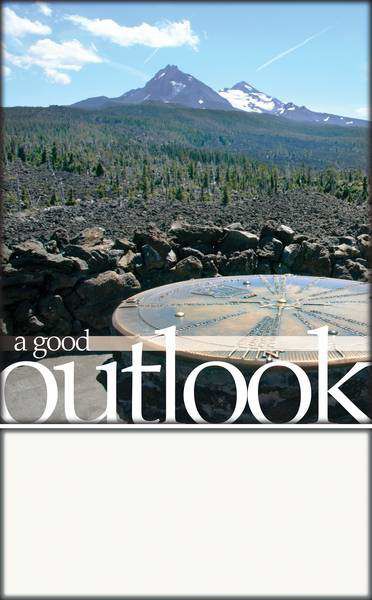A good outlook
Published 5:00 am Wednesday, August 15, 2007

- Dee Wright Observatory was completed in 1935. It’s built of lava rocks.
The Old McKenzie Pass Highway, officially known as state Highway 242, is the one place I’d take out-of-town guests if I only had one place to take them.
There’s nothing like that surge of pride that comes with showing off the good old backyard, especially when the reaction includes ooh, aah and wow. Trust me: McKenzie Pass will elicit the desired response.
West of Sisters, the road climbs through a dense fir forest, a feel-good cocoon of green on a sunny August day. Then, before you reach the pass, you pop out into the open. There’s a viewpoint on the right side of the road that’s worth a look. It offers primo views of Black Crater, Mount Washington and Mount Jefferson. And the golden-mantled ground squirrels that hang out in the rocks up there are sociable with a capital S.
Stand still for a few moments admiring the view, and several of the jaunty little chipmunk look-alikes will sally forth in hopes of a handout. When they get lucky, the ingratiating critters store the morsels du jour in their cheek pouches, and, when they have accumulated a full load, pack it back to their burrows among the boulders. That way, they’ll have a little something to chow on after they wake up in the spring.
At about 5,000 feet, the sun was beating down, but the breeze carried a faint feel of fall. We left the squirrels to their relentless gathering and headed for McKenzie Pass and Dee Wright Observatory.
Located amid a sea of long-cooled lava at 5,187 feet, the observatory is not what you’d expect. Unless you figured all along that it would be a stone memorial that looks more like a bunker than an observatory.
According to the Willamette National Forest, it was built in the 1930s by the Civilian Conservation Corps Camp F-23 of Company 927, and foreman Dee Wright made ingenious use of the materials at hand. He was charged with building a structure that enhanced the tourist potential of McKenzie Pass. The result is a charmingly crude outpost complete with “lava tube” viewing portals that frame several Central Oregon Cascades peaks. Atop the structure is a rock and bronze “peak finder” that provides 360-degree identification of the mountains thereabouts.
And there are many. Mount Jefferson, Cache Mountain, Bald Peter, Dugout Butte, Green Ridge, Black Butte, Bluegrass Butte, Black Crater, North Sister, Middle Sister, Little Brother, Four-in-One Cinder Cone, The Husband, Condon Butte, Horsepasture Mountain, Scott Mountain, South Belknap Cone, Belknap Crater, Little Belknap and Mount Washington are the volcanic peaks you can study from the top.
Along the paved trail up to the observatory, there are interpretive panels that tell the story of the observatory construction and the geologic and human history of the area. The observatory is accessible via wheelchair.
If you’re looking for further background and more compelling photo ops, the nearby Lava River Interpretive Trail is a short (½-mile) complement to the observatory jaunt.
Taken as a whole, it would be difficult not to be enchanted by the fiery origins of the place and the irrefutable evidence all around you.
Most years, you can follow the narrow road west until it meets back up with state Highway 126. But this season, the Oregon Department of Transportation is repairing the highway to the west of Dee Wright, between Scott Lake and Alder Springs. As it stands now, It won’t re-open until just before Labor Day, according to Deschutes National Forest spokesman Chris Sabo.
But rest easy.
“They aren’t making it a freeway by any means,” Sabo said.
He pointed out that the old highway does become a freeway of sorts for bikers during a brief window in spring after most of the snow has been plowed or melted off and ODOT opens the gates to cars. During that period, cyclists cruise the scenic highway without the threat of motorized traffic looming around every bend.
But summer’s the time to load up the out-of-towners and head for McKenzie Pass. Even though there are plenty of worthy day-trip destinations (after all, this is Central Oregon), Dee Wright is the hot ticket for mid-August.
They will be impressed.
if you go
Getting there: From Sisters, drive west on U.S. Highway 20 and turn left at the junction with state Highway 242. Follow the highway about 15 miles to the observatory. It’s a windy, narrow road, so proceed with caution.
Permits: None required.
Contact: Sisters Ranger District of the Deschutes National Forest, 549-7275.






